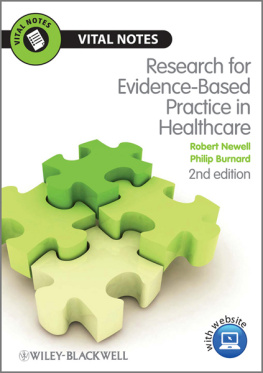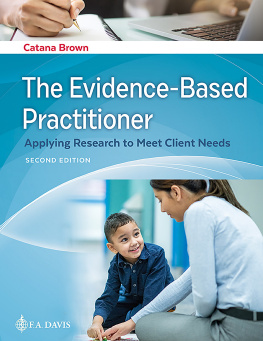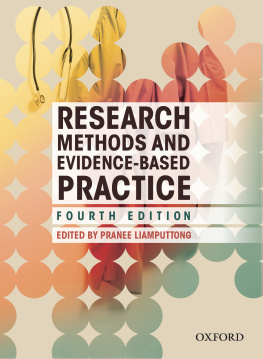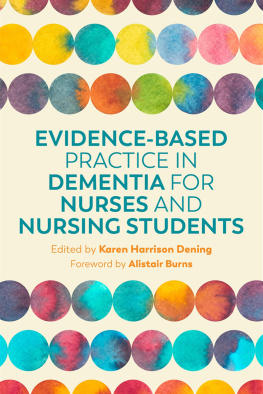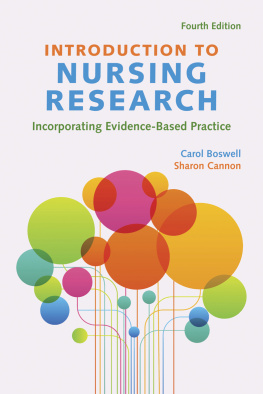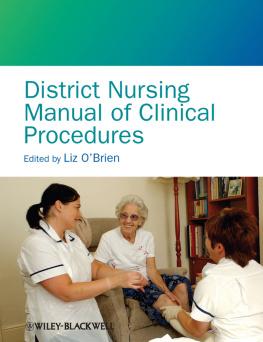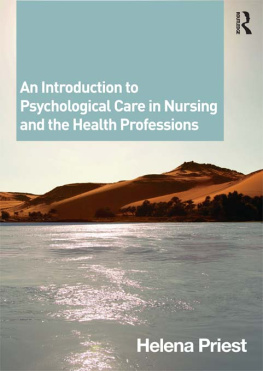
To Phils wife and children, Sally, Aaron and Becky; and to Robs wife, Caroline and late mother, Olive. Also to Robs late Latin teacher, Agnes.

This edition first published 2011
2011 and 2006 by Robert Newell and Philip Burnard
Blackwell Publishing was acquired by John Wiley & Sons in February 2007. Blackwells publishing program has been merged with Wileys global Scientific, Technical, and Medical business to form Wiley-Blackwell.
Registered office:
John Wiley & Sons Ltd, The Atrium, Southern Gate, Chichester, West Sussex, PO19 8SQ, UK
Editorial offices:
9600 Garsington Road, Oxford, OX4 2DQ, UK
2121 State Avenue, Ames, Iowa 50014-8300, USA
For details of our global editorial offices, for customer services and for information about how to apply for permission to reuse the copyright material in this book please see our website at www.wiley.com/wiley-blackwell.
The right of the author to be identified as the author of this work has been asserted in accordance with the UK Copyright, Designs and Patents Act 1988.
All rights reserved. No part of this publication may be reproduced, stored in a retrieval system, or transmitted, in any form or by any means, electronic, mechanical, photocopying, recording or otherwise, except as permitted by the UK Copyright, Designs and Patents Act 1988, without the prior permission of the publisher.
Designations used by companies to distinguish their products are often claimed as trademarks. All brand names and product names used in this book are trade names, service marks, trademarks or registered trademarks of their respective owners. The publisher is not associated with any product or vendor mentioned in this book. This publication is designed to provide accurate and authoritative information in regard to the subject matter covered. It is sold on the understanding that the publisher is not engaged in rendering professional services. If professional advice or other expert assistance is required, the services of a competent professional should be sought.
Library of Congress Cataloging-in-Publication Data
Newell, Robert, 1954
Research for evidence-based practice in healthcare/Robert Newell, Philip Burnard. 2nd ed.
p.; cm. (Vital notes)
Rev. ed. of: Vital notes for nurses : research for evidence-based practice/Robert Newell, Philip Burnard. 2006. Includes bibliographical references and index. ISBN 978-1-4443-3112-7 (pbk. : alk. paper)
1. Nursing-Research-Methodology. 2. Evidence-based nursing. I. Burnard, Philip. II. Newell, Robert, 1954- Vital notes for nurses. III. Title. IV. Series: Vital notes.
[DNLM: 1. Nursing Research-methods.
2. Evidence-Based Nursing- methods. WY 20.5 N546r 2011]
RT81.5.N46 2011
610.73072-dc22
2010011213
List of Common Research Terms
| Case study | A descriptive approach to research involving multiple sources of information about a person, organisation or other entity |
| Content analysis | The organisation and categorisation of text material |
| Descriptive statistics | Quantitative data analysis approach used to simplify presentation of data from a given sample |
| Ethnography | Qualitative research method involving study of a culture |
| Evidence-based practice | An approach to clinical problem solving involving a systematised synthesis of available information |
| Experiment | Quantitative research method involving randomisation, manipulation of an independent variable, use of a control group |
| Findings | The outcomes of the analysis of qualitative research (occasionally used broadly to mean any kind of results in a research study) |
| Four principles approach to ethics | Approach emphasising; respect for autonomy; beneficence; non-maleficence; justice |
| Hypothesis | Explicit statement of the predicted relationship between independent and dependent variables |
| Inferential statistics | Quantitative data analysis approach used to draw inferences from sample data to its population |
| Phenomenology | Qualitative research method involving examination of peoples perceptions of their experiences |
| Qualitative research | Broad approach to research emphasising analysis of text material |
| Quantitative research | Broad approach to research emphasising analysis of numerical material |
| Quasi-experiment | Quantitative research method similar to an experiment but with control and/or random assignment missing |
| Randomised controlled trial | A type of experiment used to investigate effectiveness of therapeutic interventions |
| Reliability | The extent to which a quantitative study examines the entity it says it does in a consistent and repeatable way |
| Respondents | Those who are studied or take part in a qualitative study |
| Results | The outcomes of the analysis of quantitative research |
| Sampling | Process by which subjects are chosen to participate in a research project |
| Single case experiment | Application of experimental and quasi-experimental methods to a single individual |
| Subjects | People whose responses are researched by researchers, in quantitative studies. Participants in research other than the researchers themselves |
| Systematic review | Systematised, rigorous approach to literature search and review |
| Validity | The extent to which a study examines the entity it says it does |
SECTION 1
Contextual Materials
Introduction to Healthcare Research for Evidence-Based Practice
Introduction
This book is about research in healthcare, seen principally from the viewpoint of students undertaking pre-registration and postregistration educational programmes. We are both active healthcare researchers and are passionate believers in research by healthcare professionals (HCPs) for the benefit of the patients and clients we serve. Our own background is principally in mental health nursing, although, as teachers and researchers, we have widened the scope of our work beyond a purely mental health focus. Likewise, as researchers we have typically worked in multidisciplinary research, with the broad range of other HCPs, with medical practitioner researchers and with researchers from a range of non-clinical disciplines. In preparing this book, we have sought to make it relevant to colleagues from across the disciplines, and we hope this comes over in the material that follows. We both started to get interested in research from early on in our clinical careers, and did a good deal of research while still mainly working as clinicians. The real reason we started in research was because we were interested in whether the things we did with patients and clients made a difference to their experiences of illness, recovery and health. If you have picked up this book, we guess you have a similar interest, and we hope we can work with you in developing that interest and finding ways you can translate your ideas into practical projects, whether these be through your own research or your examination of the research literature to inform your practice.
In the following pages, we will try and take you through the various elements of undertaking a piece of research. Even if you do not have to do research yourself as part of your educational course, this book is still for you for three reasons. First, much of the material we present is
Next page
